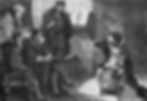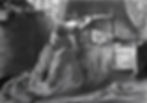Female Autonomy in Hawthorne’s The Scarlet Letter
- Deborah Zaccai
- Apr 23, 2023
- 7 min read
Nathaniel Hawthorne's The Scarlet Letter, published in 1850, has become one of the most celebrated works of American literature. Set in the Puritan Massachusetts Bay Colony from 1642 to 1649, the novel tells the story of Hester Prynne, shunned by her community after conceiving a child out of wedlock. Hester, branded with the scarlet letter “A” for adultery, must struggle to create a new life of repentance and dignity while fighting for herself and her daughter’s survival. Despite the challenges she faces, Hester exhibits remarkable personal strength and independence, making her an enduring heroine of American literature. This article aims to examine the theme of female autonomy prevalent in the story.
The American writer Nathaniel Hawthorne (1804-1864) became famous for his novels and short stories incorporating allegorical and symbolic elements. His works are thematically linked to the ethical and historical issues of the English Puritans, the ancestors of many American citizens. Hawthorne is considered a classic of American literature and a prominent figure of the Romanticism era. He was a contemporary of other great writers, such as Edgar Allan Poe and Herman Melville, and a precursor to Henry James. Although Hawthorne authored many notable works, his most renowned novel is The Scarlet Letter (1850). The book explores the life of Hester Prynne, a woman ostracised by the New England community for bearing a child out of wedlock and refusing to reveal the father’s identity. Through this work, Hawthorne reveals his admiration for the Puritans’ unwavering beliefs, but also condemns their narrow-mindedness and tyranny towards those who failed to comply with their moral code (Meltzer, 2006).

The scarlet letter was initially intended to serve as a representation of disgrace, but to Hester. It transformed into a potent emblem of identity. Over time, the letter’s significance evolves from its original purpose of identifying Hester as an adulterer to symbolising her strength and ability. Eventually, it becomes ambiguous, as Native Americans viewing the Election Day procession interpret it as a symbol of importance and status. Like Hester’s daughter Pearl, the letter acts as a tangible reminder of her connection with Dimmesdale. However, when compared to a human child, the letter appears insignificant and highlights the ultimate meaninglessness of the community’s punitive and judgmental system. While the child is believed to be a divine or natural gift, the letter is a mere human invention. Furthermore, the fluctuating interpretation of the letter’s meaning raises doubts about society’s capacity to utilise symbols for ideological reinforcement (Meng, 2003).
As the American writer and critic Van Dören (1949) notes, Hawthorne’s heroine, Hester Prynne, is the central character whose actions instigate the conflicts throughout the story. She gives birth to an illegitimate child and refuses to disclose the father’s identity, creating a rift between her and the community of Boston, who view her as a sinner and reject her. Moreover, Hester is in conflict with her former husband, Roger Chillingworth, obsessed with revealing the identity of her lover and punishing him. She is also at odds with her former lover, Arthur Dimmesdale, who is tormented by guilt, but too afraid to publicly confess his sin. Hester desires to establish a place for herself and her daughter within the Boston community, while also keeping her secret and safeguarding Dimmesdale (Van Dören, 1949).

In his A Representative Of The New Female Image—Analyzing Hester Prynne’s Feminist Consciousness In The Scarlet Letter, literary scholar Wang explains that in the opening of the novel, Hester Prynne exhibits a sense of pride and defiance, as she adamantly declines to reveal the identity of her child’s father, proclaiming that her child shall seek a “Heavenly father” and never know an “earthly one” (Hawthorne, 2008, p. 78). In addition, Hester displays her bravery and determination by fiercely defending her right to retain custody of her daughter, Pearl, when Governor Bellingham proposes the idea that she is an unfit mother. Furthermore, Hester’s proposition to flee with Arthur Dimmesdale highlights her courage, self-sufficiency, and aspiration to exercise her own agency, even if it conflicts with societal norms (Wang, 2010).
Towards the novel's conclusion, Hester accepts her fate and no longer attempts to evade her identity as a woman who has sinned. Instead, she has learned to utilise this identity positively, by displaying kindness and being entrusted with the confidential matters of others. Hester’s transformation is triggered by observing Dimmesdale’s sufferings due to his guilt and eventual redemption through his public confession. These experiences provide her with a sense of calm regarding the aftermath of their affair. Hester’s actions in the story prompt the other characters to alter their perspectives and eventually forgive her for her wrongdoing, leading to the people of Boston eventually respecting her (Hawthorne, 2008).

In her thesis, Women in The Scarlet Letter, Eeckman (2008) asserts that Hawthorne's novel not only focuses on Hester Prynne as a central character but also examines the societal forces that shape her and influence her character development. Although her background is not well-established, early chapters of the book suggest that Hester was once a headstrong and impulsive young woman with a passionate nature. However, little is known about her motivations for marrying Chillingworth, who she does not love. The transformation of Hester into the character known to the reader is primarily influenced by events following her affair with Dimmesdale. After her public shaming and subsequent isolation, she becomes introspective and ponders the nature of humanity, society, and morality. These tribulations also grow in her a sense of stoicism and free thinking. While the narrator of the novel seems to disapprove of Hester’s independent musings, the tone of the narration suggests an underlying admiration for her autonomy and ideas. Hawthorne’s portrayal of Hester Prynne not only provides a complex examination of the societal expectations of women during the Puritan era, but also presents a contrast between Hester's defiance of these expectations and the judgmental and oppressive attitudes of the surrounding community (Eeckman, 2008).
Hester Prynne’s experiences in The Scarlet Letter transform her into a compassionate maternal figure. As a result of her public shaming, she becomes more contemplative and philosophical, reflecting on human nature, social organisation, and more significant moral questions. Hester learns to control her impulsive behaviour, as she fears losing custody of her daughter. She also develops a sense of maternal responsibility towards society and cares for the poor. As the novel progresses, Hester emerges as a protofeminist mother figure, respected by women in the community who recognise the sexism that led to her punishment. Hester’s intelligence and capability are apparent throughout the novel, but the extraordinary circumstance shapes her character and make her an important figure. The shame associated with her scarlet letter eventually fades, and she becomes a symbol of strength and resilience for other women (Wang, 2010).

Hawthorne introduces Hester Prynne to the readers as a woman who is already marked by the scarlet letter that she will wear for the rest of her life. She gazes down at the emblem and even touches it to reassure herself that the infant and her shame are real. While the other characters in the book attempt to hide their transgressions, Hester is the only one who readily accepts her wrongdoing and the ensuing consequences. In the book's early scenes, Hester displays her fortitude by standing on the scaffold for hours while her community members stare at her. These early scenes of Hester foreshadow her acceptance of the scarlet letter, which she continues to wear even after the original meaning of the letter has been lost, and it now seems to stand for “Able” instead of “Adulterer.” Hawthorne indicates that the letter has become Hester’s reality, foreshadowing her commitment to the symbol for the remainder of her life (Hawthorne, 2008).
English literature professor and author, Brackett (1999), suggests that Hawthorne examines the subject of feminine autonomy by portraying Hester as a courageous woman who takes charge of her own life. Before the novel’s beginning, Hester has already defied societal norms by following her heart and engaging in sexual intercourse with an unmarried man, justifying her actions by asserting that their intimacy was sanctified. Because of her banishment, Hester is unencumbered by traditional expectations of female submissiveness and meekness. In addition, her practical responsibilities as a single parent force her to be self-sufficient: she must provide for herself and her daughter financially, while also raising a headstrong child. These unconventional circumstances allow Hester to be confident in standing up for herself, as demonstrated by her vehement objection to Governor Bellingham’s attempts to separate her from Pearl (Brackett, 1999; Hawthorne, 2008).

The novel implies that Hester’s autonomy has a cost. Hawthorne appears to be empathetic toward Hester's aspirations for a brighter future, one where the relationship between men and women would be based on mutual happiness and understanding. Nevertheless, the narrator also notes that Hester has been living outside of societal norms and appears to have lost sight of crucial ethical principles and wandering aimlessly in a moral wilderness. The novel concludes with Hester returning to the community to live a modest life and willingly resuming wearing the scarlet letter, indicating that she has abandoned some of her independent and free-thinking ways. Moreover, the portrayal of Pearl implies that female independence is incompatible with happiness. The narrator questions whether Pearl’s “wild nature” could be tamed and subdued to achieve “gentle happiness,” implying that only by sacrificing her independent spirit could Pearl attain true contentment (Wang, 2010).
A Pulitzer Prize-winning author, John Updike, attests to the novel’s emotional impact, stating that it still moves him to tears. Updike wrote three books that revolved around the characters of The Scarlet Letter, collectively known as Updike’s Hawthorne Trilogy. The third and final instalment, S., narrates a 20th-century rendition of Hester Prynne. Updike describes Hester as a captivating and somewhat enigmatic persona, embodying an assertive and sexually liberated woman and someone who ultimately accepts society’s punishment. He views her as an embodiment of the female dilemma (Seabrook, 2008).

In conclusion, in Nathaniel Hawthorne’s The Scarlet Letter, Hester Prynne’s character reflects the societal views on women’s position. Despite completing her punishment, Hester continues to wear the scarlet letter “A” as a symbol of her past actions, which evolves from a badge of shame to one of regret and reverence. Hester exhibits remarkable strength and resilience despite being victimised and objectified. She starts her own business and raises her daughter alone while fighting for custody against authorities. Over time, she gains the admiration of other women in Boston and becomes a trustworthy confidant for them. Her character is multifaceted, representing contradictory qualities such as guilt and honesty, sin and holiness, and sex and chastity. Hester’s struggle to reconcile her sexuality with society’s expectations has made her a lasting heroine of American literature. The “good woman gone bad” concept continues to be a cultural trope. Hester Prynne serves as a mythic representation of every woman’s struggle.
Bibliographical References
Brackett, V. (1999). Classic Love and Romance Literature: An Encyclopedia of Works, Characters, Authors, and Themes. CA Santa Barbara: ABC-CLIO Inc.
Eeckman, S (2008). Women in The Scarlet Letter (Master's thesis). Ghent University, Ghent, Belgium. https://libstore.ugent.be/fulltxt/RUG01/001/289/370/RUG01-001289370_2010_0001_AC.pdf
Hawthorne, N. (2008). The Scarlet Letter [Project Gutenberg]. https://www.gutenberg.org/files/25344/25344-h/25344-h.htm
Meng, X. (2003). Does Hester Get Rebirth?—Reexamination of the Heroine in The Scarlet Letter. Journal of PLA University of Foreign Languages 26.6, 79–82.
Meltzer, M. (2006). Nathaniel Hawthorne: A Biography. Minneapolis, Minnesota. Twenty-First Century Books.
Seabrook, A. (2008). Hester Prynne: Sinner, Victim, Object, Winner. NPR.
https://www.npr.org/2008/03/02/87805369/hester-prynne-sinner-victim-object-winner
Van Dören, M. (1949). Hawthorne. New York: William Sloane Associates, Inc.
Wang, Y. (2010). A Representative Of The New Female Image—Analyzing Hester Prynne’s Feminist Consciousness In The Scarlet Letter. Journal of Language Teaching and Research, Vol. 1, No. 6, pp. 893-897. http://www.academypublication.com/issues/past/jltr/vol01/06/22.pdf
Visual Sources
Cover image: Hallock Foote, M. (1878). Hester Prynne and Pearl before the stocks. Retrieved April 19, 2023 from https://en.wikipedia.org/wiki/File:Hester_Prynne.jpg Figure 1: Brady, M.B. (1860-64). Photographic portrait of Nathaniel Hawthorne. Library of Congress. Retrieved April 19, 2023 from https://en.wikipedia.org/wiki/File:Nathaniel_Hawthorne_by_Brady,_1860-64.jpg Figure 2: Hester Prynne and her daughter Pearl [Illustration]. North Wind Picture Archives. Alamy Stock Photo. Retrieved April 23, 2023 from https://wordsworth-editions.com/the-scarlet-letter/ Figure 3: Thomson, H. (1915-20). Hester encounters Arthur Dimmesdale in the forest [Illustration]. Retrieved April 19, 2023 from https://en.wikipedia.org/wiki/File:Hester_and_Arthur_Dimmesdale,_Hugh_Thomson_-_Scarlet_Letter_illustration.jpg Figure 4: Merle, H. (1861). The Scarlet Letter [Painting]. Walters Art Museum. Retrieved April 19, 2023 from https://art.thewalters.org/detail/25737/the-scarlet-letter/
Figure 5: Hallock Foote, M. & Ipsen, L.S. (1878). Hester fighting to keep her daughter [Illustration]. Retrieved April 19, 2023 from https://www.gutenberg.org/files/25344/25344-h/25344-h.htm Figure 6: Hallock Foote, M. & Ipsen, L.S. (1878). A touch of Pearl's baby hand [Illustration]. Retrieved April 19, 2023 from https://www.gutenberg.org/files/25344/25344-h/25344-h.htm






